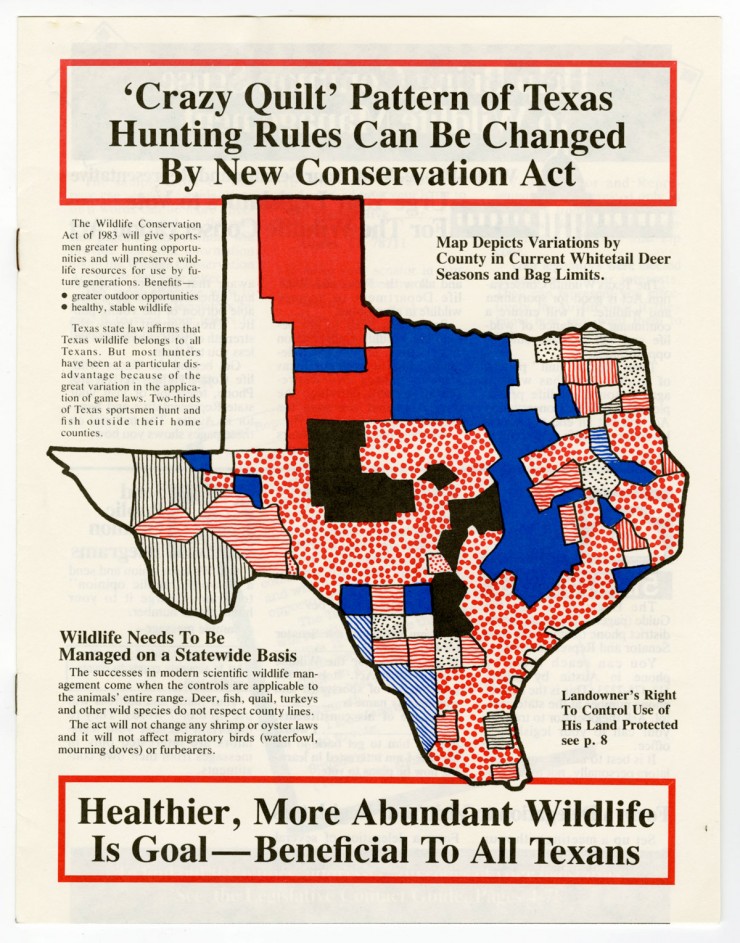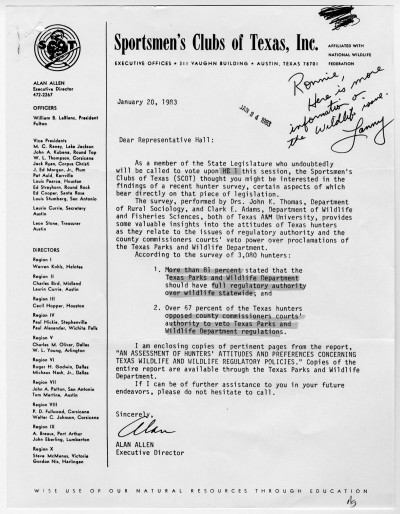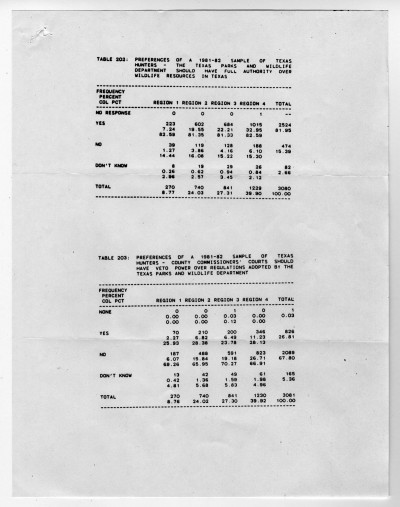The Lone Star State is great for hunting. North Texas offers access to whitetail deer, bobcats, coyotes, grey and red fox, badgers, raccoons, ringtail cats, wild hogs, teal, ducks, geese, and a variety of fish. In 2015, there were 1,060,455 registered license holders, according to the U.S. Fish And Wildlife Service. The Texas Parks and Wildlife Department oversees these license holders, ensuring that no laws are broken without penalty. The Wildlife Conservation Act of 1983 gave TPWD this power after years of counties maintaining their own hunting laws, creating a “crazy quilt” of regulations.
Prior to 1983, 116 counties in Texas did not fully answer to the state’s game law or Texas Parks and Wildlife. 13 of those 116 counties were non-regulatory, subject to wildlife and hunting laws that hadn’t been updated since 1925. 30 counties operated under a Commissioner’s Court, and they had the ability to veto any decisions made by TPWD. The remaining 73 granted only partial authority to TPWD.
The purpose of the law is “to provide a comprehensive method for the conservation of an ample supply of wildlife resources on a statewide basis to insure reasonable and equitable enjoyment of the privileges of ownership and pursuit of wildlife resources. This chapter provides a flexible law to enable the commission to deal effectively with changing conditions to prevent depletion and waste of wildlife resources.” To read the full Wildlife Conservation Act, click here.
The law was favored by hunters for the most part, and there were 1,050,496 paid license holders in 1983. According to a survey taken by the Sportsmen’s Clubs of Texas, about 82% of hunters across the state were in favor of Texas Parks and Wildlife having full authority over the state’s wildlife resources. However, not everyone was convinced that this law had the capability to successfully manage wildlife state-wide. For example, landowners have the ability to restrict the amount of game taken and the length of hunting season on their property. Some believed that this would allow the “crazy-quilt” trend to continue.
Nevertheless, the law passed and has been in effect now for over 30 years. The images in this post come from the Lanny Hall collection, which contains much more grey literature about the Wildlife Conservation Act. The collection also contains records pertaining to subjects such as public education, tuition rates and funding for colleges and universities, equal rights and LGBT issues, transportation, and health topics.






Leave a Reply